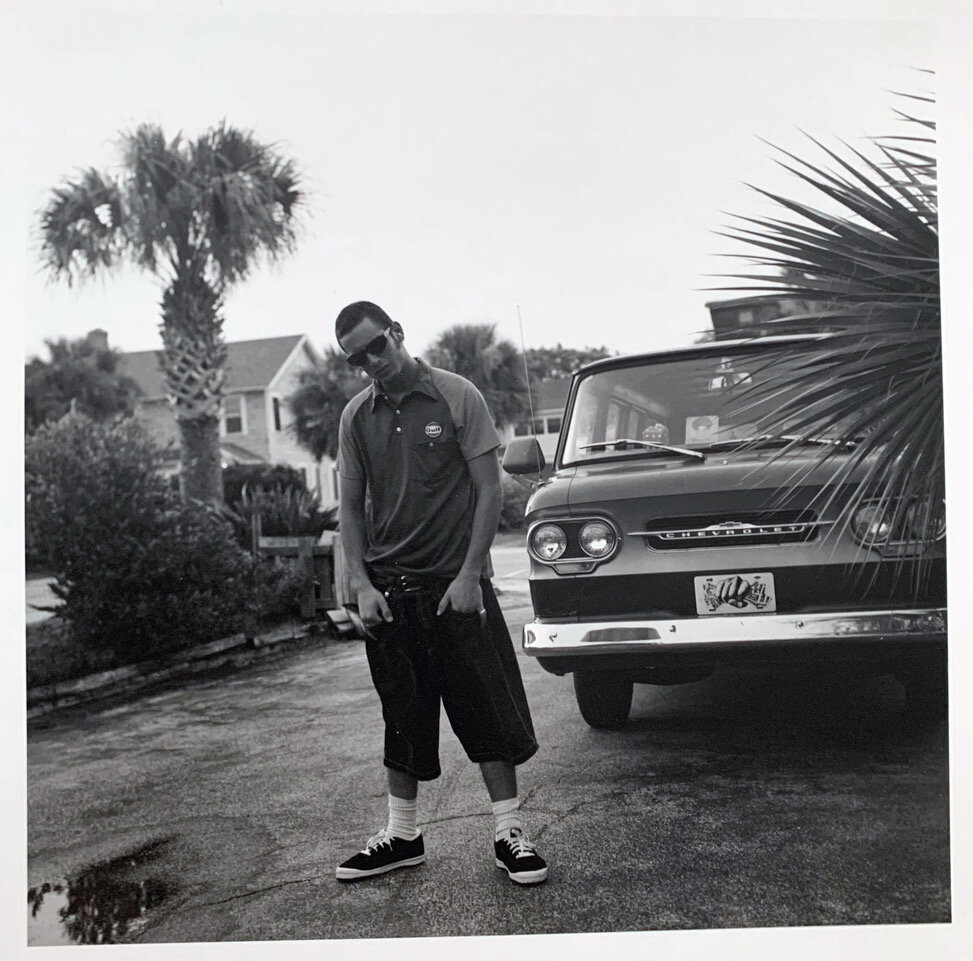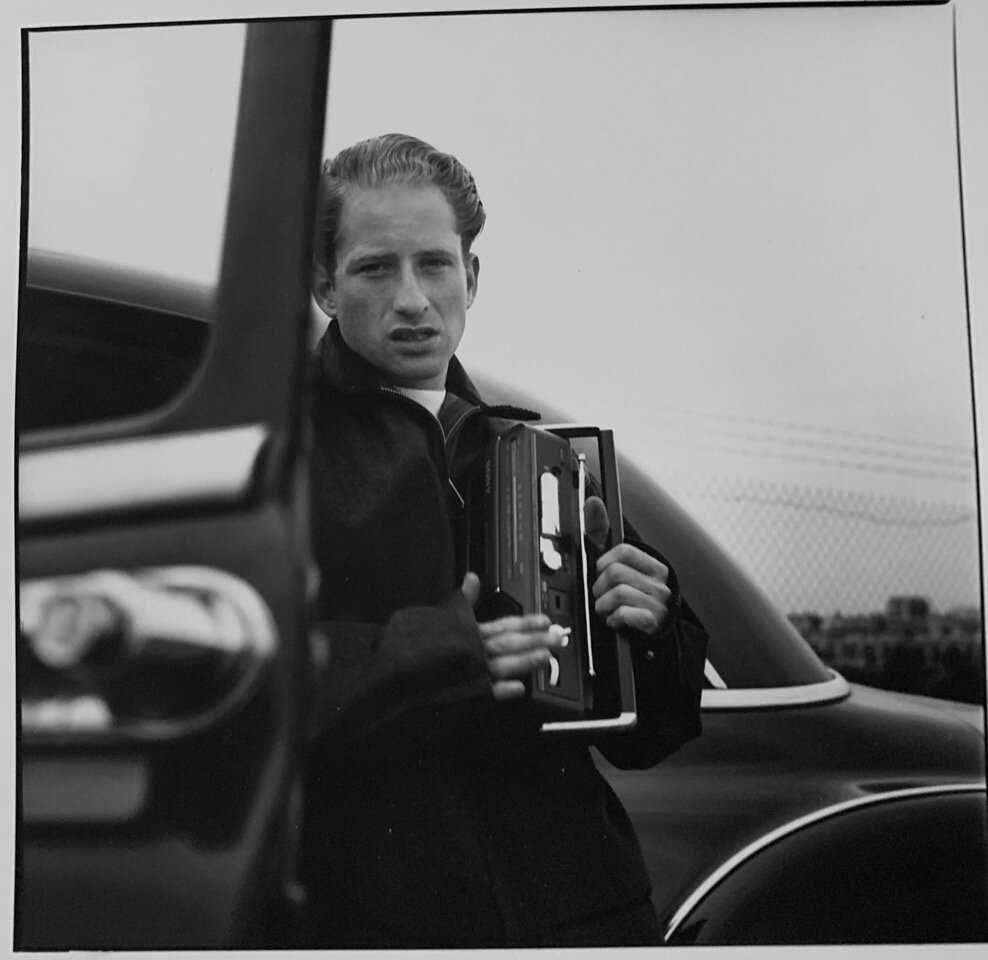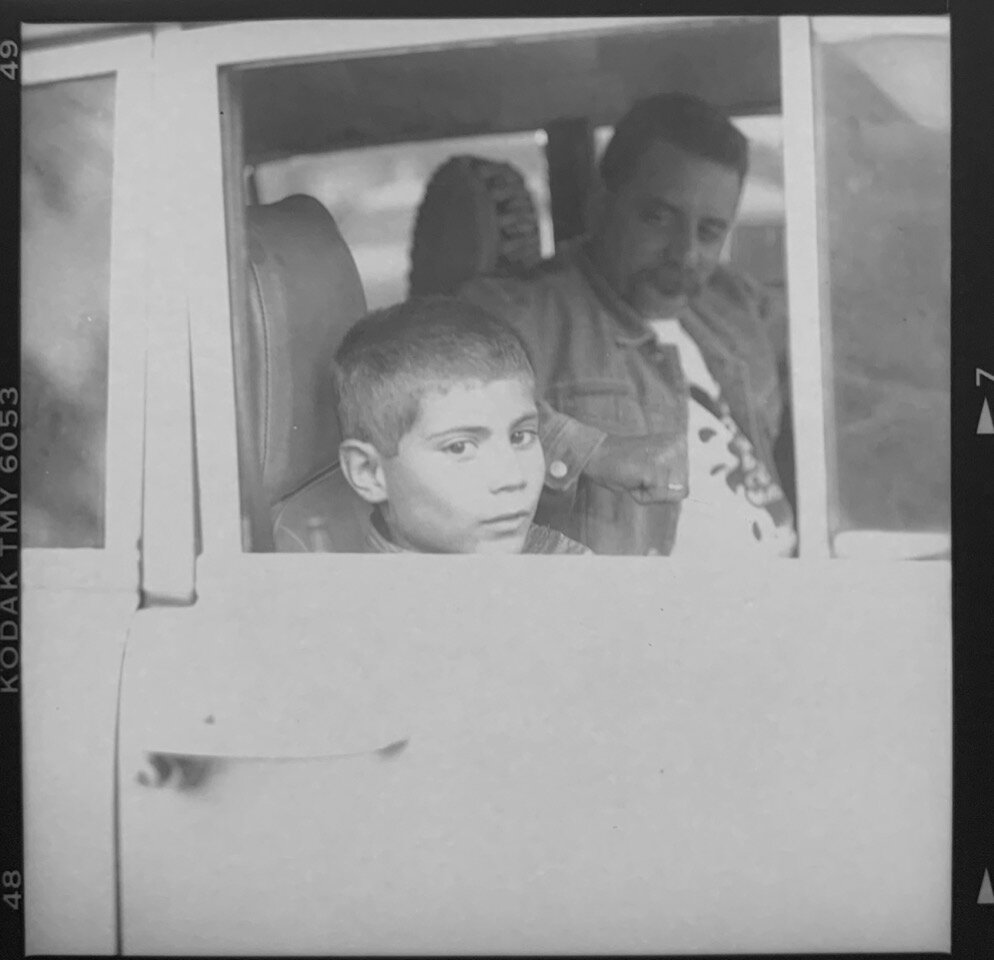Sue Kwon: The Art of Car
Photographer Sue Kwon’s Portraiture on the Streets
There’s nothing self-conscious about photographer Sue Kwon’s work. Kwon has been capturing life as it happens on the streets for several decades.
Her early work for The Village Voice captured the vitality of downtown New York streets for the weekly print paper, on film. She photographed Jay-Z, Beastie Boys, Biggie Smalls, and the Wu-Tang Clan. She documented the beginnings of street wear culture for brands such as Project Dragon, GFS, Walker Wear, Triple 5 Soul, and early Supreme. She photographed the Italian-American community on Mulberry Street, who presided over Little Italy.
Writer and curator Vikki Tobak included Kwon’s work in the exhibition “Contact High” on view at the Manarat Al Sadiyaat. “I had the pleasure of first meeting Sue during the early nineties, when we were both contributing to early magazines like Paper and Ego Trip covering NYC downtown culture,” Tobak says. “Here was a young woman who was equally comfortable photographing skate kids and LES elders as she was the burgeoning hip-hop scene. Sue was that rare photographer with a keen eye for style, subculture and, above all else, individuality. Like her personality, her camera gaze feels warm, and welcomes whoever she is documenting to open up and be themselves.”
Kwon is among the essential documentarians of hip hop, a cornerstone of the canon. “Contact High” opened at the Annenberg Space for Photography and traveled to the International Center of Photography last year, and is based on the book Tobak authored by the same name. “I once asked Sue about her legendary shot of ODB as seen on a larger contact sheet she had shared with me,” Tobak says. “Half the contact sheet was Wu-Tang and ODB and the other half was a sequence of shots in a laundry mat in Chinatown. I inquired how the two seemingly disparate subjects ended up on the same contact sheet and she responded ‘oh, I was just walking by the laundry mat on my way to the Wu-Tang video shoot and I saw this mother with a child on her back doing laundry. I stopped to photograph as it was equally as captivating to me as the Wu-Tang Clan. One of my favorite stories.”
What makes Kwon’s work distinct is her ability to capture the fleeting moment. Much of her work is in black and white, framed by delicate attention to detail. Her subjects seem to be unguarded, in mid-thought, and relaxed. We recognize these people, sometimes because they are famous, or simply because they seem familiar, or they are feeling something we identify with in that moment -- vulnerability, pride, wistfulness. The images are sincere.
In her automotive photography, Kwon often uses car doors as a focal point. More than a prop, the car becomes a barrier to hide behind or a portal to peer from within. When the car is a barrier, it stands in defense alongside the figure, protective, in concert. In other shots, the subject is lodged in the crevices of a window, a seat, or a sunroof, as if encased from within a diorama. Cars are essential part of the street Kwon’s work thoroughly dissects, another dimension that lends perspective. Often she is drawn to cars that are old, a reminder of another time.
Her first monograph Sue Kwon: Street Level was published in 2009 by Testify Books. In the introduction Hilton Als wrote, “One can see Kwon’s empathetic involvement, her poetical surgeon’s eye, in the way she frames the streets, fashion, faces, and situations that make up her world. Again and again, she incites the viewer to look at [what] she has faithfully recorded in her personal, anarchic, and radiant photographs.”
“More than a prop, the car becomes a barrier to hide behind or a portal to peer from within.”
The common thread in Kwon’s work is her ability to inject herself into the right place. She’s curious. She’s patient. The camera is a tool for courage, and she is has her finger on the shutter button. “What is commonly called ‘street photography’ was a way of life for Sue,” as she simultaneously lived and photographed transformative subcultures that would define New York City,” Tobak says.
An examination of her recent work shows her in the midst of New York City summer protests, immersed as a witness to the participants’ determination. She photographed the work of artist Jammie Holmes, a public demonstration in the sky on May 30. Through Kwon’s lens the plane is flying just beyond the Freedom Tower, cottony clouds in a blue sky, as Holmes’s message reads, “They’re going to kill me.”
While the tools of the trade may be digitized, over two decades, Kwon’s lens remain steady, deliberate and sure.
Photography by Sue Kwon.














